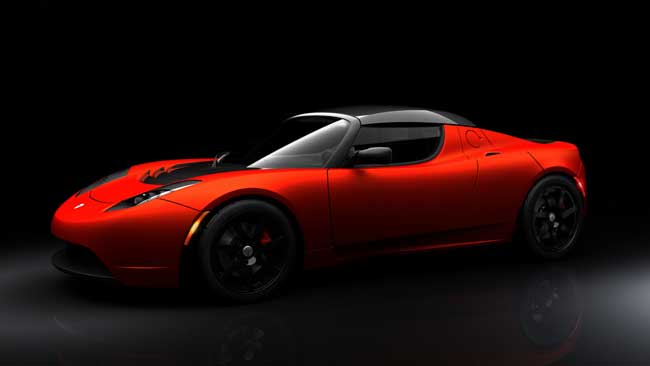What Will Electric Cars Look Like?

Right now, true electric cars are rare. In fact the most common version is the golf cart that's been made street legal, putting along at up to 30 mph in many sunny communities of the Southwest.
But now Detroit says it plans to get serious about electric cars as part of the effort to emerge from the brink of irrelevancy.
The look of electric cars may ultimately depend on whether Detroit dominates or if a handful of upstart and innovative smaller companies can muscle in on the market.
More of the same?
Do not expect the first mass-produced electric cars to look much different than today's vehicles. Even though electric engines take up less room than conventional internal combustion engines, designers at Ford and GM say they won't necessarily radically redesign car exteriors right away, according to CNN.
The reclaimed space is more likely to be used to make interiors more roomy and, eventually, to make cars smaller and more aerodynamic.
Over time, however, electric cars are bound to evolve as form inevitably follows function. The Toyota Prius, a hybrid electric-gas vehicle, already showed off design changes aimed at improving efficiency.
Sign up for the Live Science daily newsletter now
Get the world’s most fascinating discoveries delivered straight to your inbox.
At a panel discussion last week, reported on by autoweek.com, designers hinted at some changes to expect. One obvious example: An electric engine doesn't need the same ventilation and cooling, so the grill could go. Hoods can be rethought, since there will be less under them.
Meanwhile, smaller car companies are innovating.
Small, green and gorgeous
Fisker Automotive calls itself "a green American premium sports car company with a mission to create a range of beautiful environmentally friendly cars that make environmental sense without compromise."
Fisker is signing up parts suppliers and dealers for production of a four-door sedan that'll retail for about $87,500 next year. The car goes 50 miles on its electric motor, then a small gas engine kicks in — not to drive the wheels but as a generator to charge the batteries.
The Tesla Roadster, brainchild of Elon Musk (a co-founder of SpaceX, which is developing a new breed of commercial space rockets) is a pure speedster that shows off what electric can do by putting torque fully to work, if you have oodles to spend.
Tesla hopes to come in under $50,000 for a sleek 4-door sedan, the Model S, in 2011.
Price and speed
Price remains a key issue in the short term.
The much anticipated Chevy Volt, which won't knock anyone's socks off designwise, will run around $40,000. Due out next year, it also uses a small gas engine to charge the electric motor after about 40 miles.
One thing that could make the Volt and other electric cars appealing to many American motorists: They are fast off the line.
"Acceleration is instant," says Detroit News Auto Critic Scott Burgess, who just tested a Volt. "The electric motor applies immediate torque to the front wheels so it feels even faster than it really is."
The Ultimate Aero EV, an electric sports car from Shelby SuperCars, will go zero to 60 in 2.5 seconds and have a top speed of 208 mph, the manufacturer claims. It has looks to go with the speed and is sure to get you a ticket.
Finally, one problem with electric cars you might not have considered: They're too quiet. Pedestrians and bikers could be run over by cars they never hear coming, critics worry. Therefore Congress is considering establishment of a minimum noise level for electric cars.
Robert Roy Britt is the Editorial Director of Imaginova. In this column, The Water Cooler, he looks at what people are talking about in the world of science and beyond.
Robert is an independent health and science journalist and writer based in Phoenix, Arizona. He is a former editor-in-chief of Live Science with over 20 years of experience as a reporter and editor. He has worked on websites such as Space.com and Tom's Guide, and is a contributor on Medium, covering how we age and how to optimize the mind and body through time. He has a journalism degree from Humboldt State University in California.










